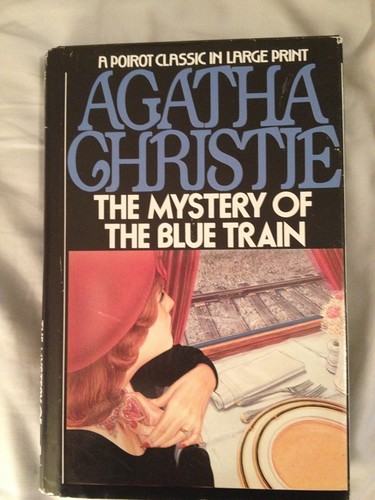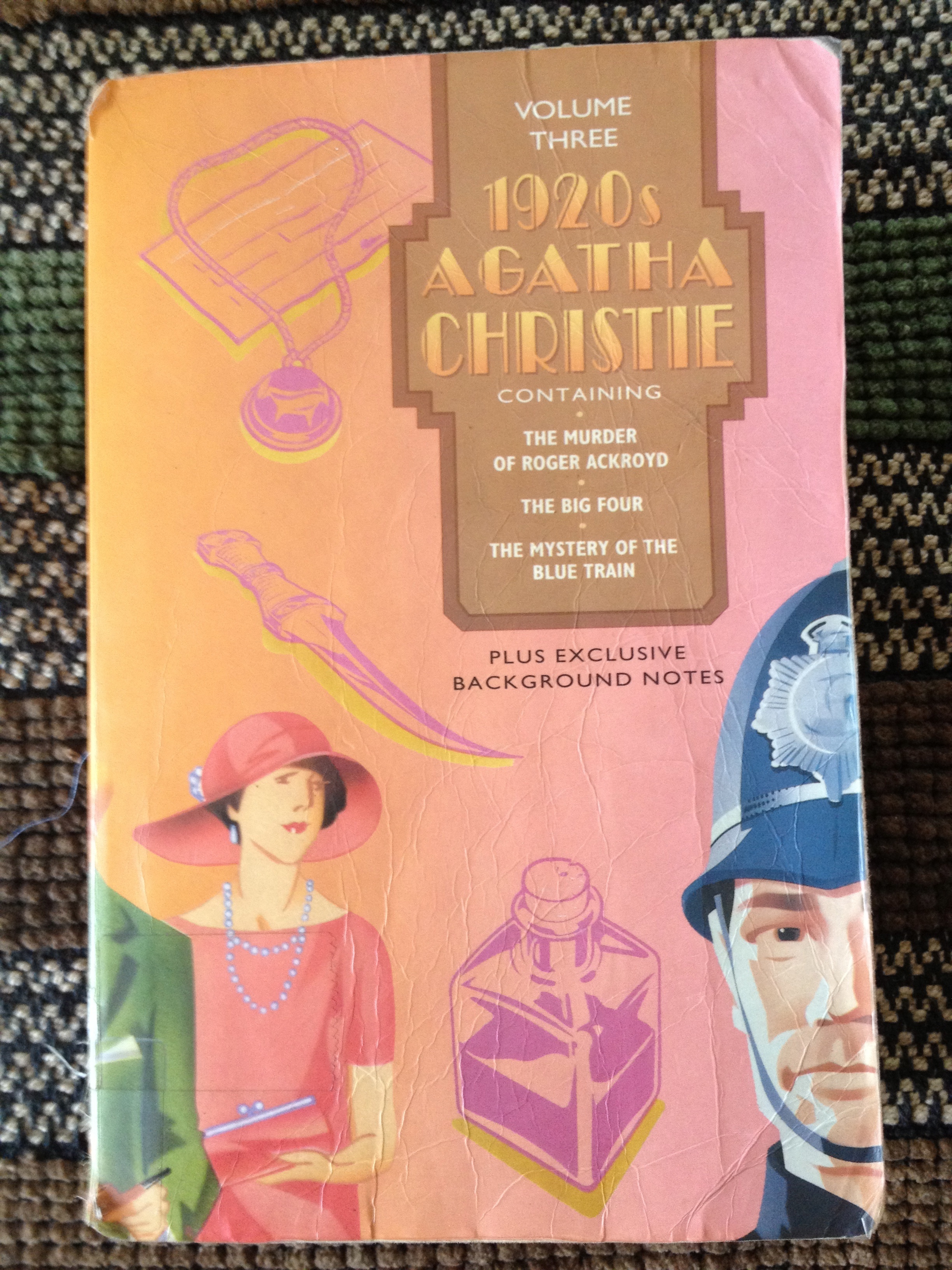KATHRYN:

So my favorite part of reading ‘The Blue Train’ this time round, was the first sentence of the afterward, which accompanied my copy:
‘In an interview published in 1966, Agatha Christie declared that ‘The Mystery of the Blue Train’ was certainly the worst book she had ever written’. She further described it as ‘commonplace, full of cliches, with an uninteresting plot’.
Like ‘The Big Four’, which preceded it, ‘The Mystery of the Blue Train’ falls in that period of Chiristie’s life when she disappeared and ultimately divorced her husband. While the circumstances in which Christie wrote the book probably colour her opinion, it’s not great, and certainly the cliche part is very true. On many occasions, particularly in the first opening chapters, Christie uses the nationality of a character as shorthand for their personality. Even the heroine of the piece, Miss Katherine Grey is characterised as cool and very English.
I think the murder plot was serviceable enough. Setting it on the train enabled Christie to mess around with the timing of events, and there are several potential murderers (with of course none of them being the actual murderer!) There are some reasonable twists and misdirections, although I found the accompanying love story a bit meh. The romance of Katherine Grey with both Derek Kettering and Major Knighton is an important component of the mystery. However, they both fall in love with her very quickly, and bounder and philanderer Derek Kettering is eventually redeemed on the back of his murdered (American) wife, and this left a bad taste in my mouth.
Probably my favorite pieces of the actual *book* were a couple of exchanges between Poirot, and his newly hired manservant Georges (or George, in the common English). In these Christie produces some very nice characterisation and gentle humor, more reminiscent of that in ‘Roger Ackroyd’. Georges becomes a long standing character, so it was nice to recognise this as his first appearance as well.
The other thing of note is that Miss Grey originally hails from St Mary Mead! We are still to reach a Marple story, so it was interesting to see this mention early on – particularly as Katherine comments that ‘things don’t happen in St Mary Mead’. (I guess they will in a few years!)
TANSY:
I think I liked this one a lot more than Agatha did! Certainly it was miles more enjoyable than “The Big Four.” I think that even though it’s not as clever as some of her other books, it almost is, and you can see the shape of her grand masterwork mysteries going on in the background.
It was very slow to start, especially as it wasn’t obvious which character we were supposed to be following until Katherine turned up – before that it could as easily have been Ruth or her father! And while I would happily have read a much longer book about Katherine and her new life as a wealthy woman, I was sad that Agatha seemed to lose interest in her towards the end, writing her out off camera.
But Poirot is lovely in this one, when he finally appears. He seems to be enjoying life again and I enjoyed his scenes with Georges, with Katherine and with Lenox who totally deserves to be a heroine in her own book.
I did think the twist was rather good, as it was set up RIGHT from the start that the Comte was an obvious blackguard, and Derek just as bad, and the dancer mistress blatantly murderous but too selfish to do it herself… I wondered how on earth you could have a mystery with only two suspects, and to that end had half an eye on Katherine being a very sneaky murderess. But the bit with the male-impersonating maid and especially the revelation that the lovely, awkward pre-murder scene between Ruth and Katherine was not in fact Ruth at all is a beautiful detail. I wonder how on earth they manage to deal with it in a TV/film adaptation, as it only works because this is prose, and third person head-jumping prose at that.
I also liked that the ‘nice guy’ secretary was not in fact the nice guy at all, but that doesn’t mean that Derek deserves Katherine in the least. I hope she comes to her senses, ditches him, and runs off on a girly Mediterranean cruise with Lenox.
The St Mary Mead bit made me giggle. Obviously Miss Marple hasn’t moved there and started murdering people yet!
COMING NEXT:
The Seven Dials Mystery (1929)
[Eileen “Bundle” Brent, Superintendent Battle]
Partners in Crime (1929)
The Mysterious Mr Quinn (1930)


